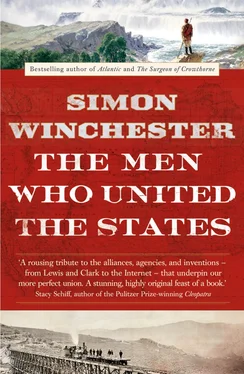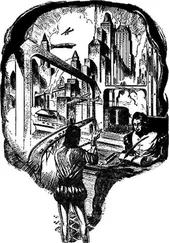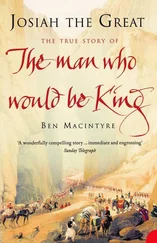Matters in fact began rather hesitantly. The ordinance came into formal effect on May 27, 1785, and Hutchins began his survey of the first seven ranges of Ohio—the tract of land spanning the first forty-two miles west of the meridian—a scant three months later. But then scouts reported that a Delaware war band had attacked settlers some miles ahead—a trading post had been sacked and a migrant American murdered, his doorway smeared with red paint as a warning. Already the local indigenes—Shawnee especially—had expressed reservations at Hutchins’s plans. To add to their quite understandably cynical attitude toward white men’s treaties, and to their pervasive and quite reasonable fear of dispossession, they felt little sympathy for the settlers’ apparent need to draw straight lines through lands across which they had been content to meander for centuries, following the routes of animals and streambeds and other natural features. They welcomed the haphazard and felt slighted by the straight.
Hutchins’s surveying team was understandably spooked by the killing, and all pulled back to Pittsburgh. It took them nine more months—and a guarantee of cavalrymen’s protection—before they recovered their nerve. They then picked up their chains and came back, extended their 40° 38′ 33″ baseline to a town called Magnolia, and soon managed to survey with a fair degree of accuracy four of the ranges in 1787. By the next year, they had completed all seven.
The surveys were done hastily and often quite imperfectly; each section was merely marked with a white stone at its corners, and at first no surveys at all were performed inside the sections themselves. But it was a start. Congress was formally notified. Maps were then published, and the selling of America began, formally and in earnest. Tacked to office doorways and trees and published in such local newspapers as then existed were advertisements displaying the beginnings of a new phase in American history. Each showed a map
of the Seven Ranges of Townships, being part of the Territory of the United States, NW of the River Ohio, which by a late Act of Congress are directed to be sold.
That part which is divided into sections or tracts of a mile square will be sold in small tracts at public auction in Pitsburg the residue will be sold in quarters of Townships at the seat of Government.
During the next few years, all of the rest of the Northwest Territory was surveyed, and the salable sections were duly disposed of. Towns and villages and hamlets were born where the land was deemed most suitable for settlement, and thousands of hopeful migrants streamed westward. Within fifteen years, the quarter-million square miles of the old territory had been transmuted into the five-and-a-bit states that now occupy its immensity: Ohio, Indiana, Illinois, Michigan, Wisconsin, and a part of Minnesota. Independent America had started out with thirteen states; now the constellation of stars that was symbolizing them on the nation’s newly adopted flag was starting to swell, and fast.

The more westerly of these states (Minnesota aside) stopped short where the territory had stopped short: the east bank of the Mississippi River. Beyond the cliffs and mudflats of the river, the writ of America did not run. West of the Mississippi, the land still belonged to France, and in theory and law, it was no business of Americans to travel there, either to survey or to settle.
Except that everything changed on April 30, 1803, when the American government—in what many consider the most prescient triumph of Thomas Jefferson’s presidency—bought from France all 820,000 square miles of its possessions on the American continent.
With a few strokes of a pen and the payment to Napoléon, America overnight doubled her size. With the acquisition—for $3 million in gold and $12 million in bonds—the country turned herself into what seers of the time recognized as a potential world power and even at that very moment a force to be reckoned with. The Louisiana Purchase, as the transfer was known, suddenly untangled America from the most pernicious of colonial snares and guaranteed her (because the port of New Orleans—Louisiana’s third and final capital city, after Mobile and Biloxi—was naturally a part of the sale) unencumbered access to the Gulf of Mexico. Included were seemingly unending stretches of real estate for the settlement of many more millions of yeoman stock—men and women who could be encouraged to undertake their advance from the rigors of respectable Eastern poverty to the nobility of hard-won Western wealth.
If this great tract of land earmarked for Jefferson’s imagined millions of settlers was to be properly incorporated into a United States of America—if, in short, it was to be united with all the existing rest—it all now needed to be surveyed and sold, just as the Northwest Territory had been surveyed and sold in the years before. To be surveyed and sold it needed also to be known. To be known, it needed to be crossed.
PEERING THROUGH THE TREES
The decision to cross the continent had actually been made some months earlier, on a late-summer afternoon in 1802 at Monticello. Thomas Jefferson was sitting in rapt attention, poring over a thick, heavy book of more than four hundred uncut and untrimmed pages, bound in blue paper and published by the firm of Cadell and Davies in London. Voyages from Montreal to the Frozen and Pacific Ocean had been written by a Scottish fur trader, from Stornoway in the Scottish Outer Hebrides, named Alexander Mackenzie. Or more accurately, Sir Alexander Mackenzie—since King George III had awarded him a knighthood for becoming the first white man ever to cross the entirety of North America.
Mackenzie had completed his voyage almost nine years earlier. He suspected that his seven-month overland journey to the Pacific was probably of historic moment, and so he had left a memorial. He had created what he hoped would be a lasting inscription on a tiny sea-washed rock near the present-day British Columbia fishing village of Bella Coola: “Alex. MacKenzie, from Canada by land. 22nd July, 1793.” He had inscribed the message with his finger, using an old trappers’ trick for long-duration messages, dipping it into a poultice made of bear grease mixed with vermilion powder and smearing out words that he hoped would survive the cold and lashing rains for which the Pacific coast is notorious.
One can imagine Thomas Jefferson’s reaction as he read the closing pages of the blue-bound volume, on learning that a mere Canadian, a British loyalist, had been the man to first traverse the American continent. It was unseemly. It was an affront. It was a claim that simply should not be allowed to stand.
As legend has it, he put down the book, his face purple with apoplectic annoyance, and turned to his twenty-eight-year-old secretary, Meriwether Lewis, who was sitting beside him. He told Lewis in no uncertain terms promptly to organize an expedition to cross his own country—an expedition that would, among other things, trump the ill-considered wanderings of a forelock-touching Scotsman. He had little reason to suppose the venture would in time become and remain, to all Americans, the most noted of all the many exploratory journeys through and around their now mighty, sprawling, and mysteriously alluring new nation.
This Monticello moment was the birth of the so-called Corps of Discovery, the United States Army’s expedition best known today by the names of its joint leaders, Lewis and Clark.
Meriwether Lewis himself needed little by way of convincing. He was not just curious and eager to match and better Mackenzie’s achievement, but he, like Jefferson, wanted to ensure that the detested British in no way preempted any potential American claims to the distant West. Lewis also had a highly personal motive to mount a new expedition, stemming principally from having been thwarted by Jefferson in a bid a decade earlier to try such a venture. 3
Читать дальше













